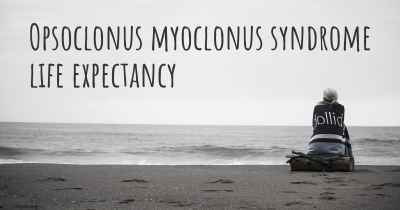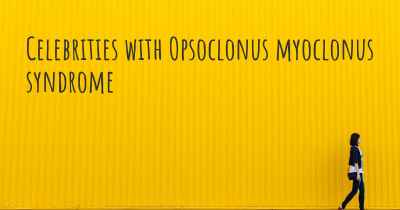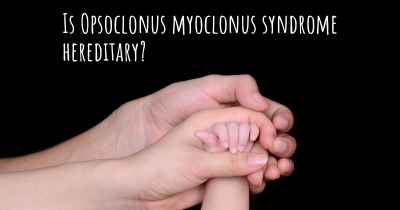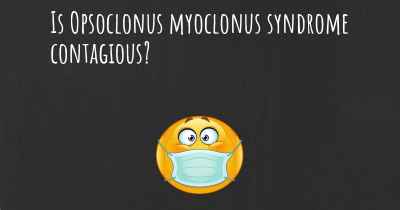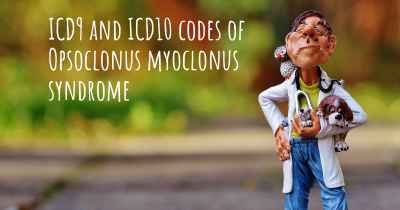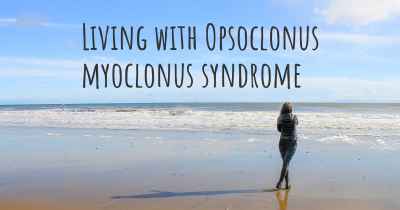What is the history of Opsoclonus myoclonus syndrome?
When was Opsoclonus myoclonus syndrome discovered? What is the story of this discovery? Was it coincidence or not?
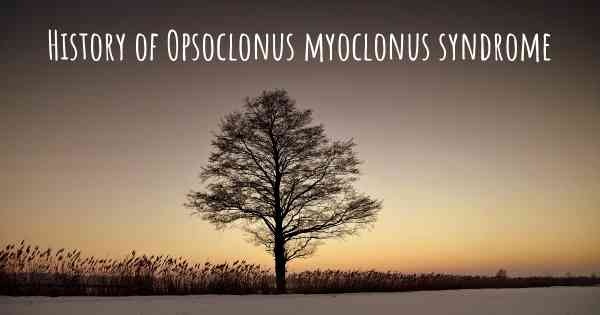
Opsoclonus myoclonus syndrome (OMS) is a rare neurological disorder characterized by the presence of rapid, involuntary eye movements (opsoclonus) and sudden, brief muscle contractions (myoclonus). It is also known as dancing eyes-dancing feet syndrome or Kinsbourne syndrome, named after the neurologist who first described it in 1962.
The exact cause of OMS is still unknown, but it is believed to be an autoimmune disorder, meaning that the body's immune system mistakenly attacks healthy cells in the nervous system. OMS can occur at any age, but it is most commonly diagnosed in children between the ages of 1 and 5 years old. It affects both males and females equally.
The onset of OMS is often sudden and rapid, with symptoms appearing over a few days or weeks. The most prominent symptom is opsoclonus, which is characterized by uncontrolled, chaotic eye movements in all directions. These eye movements are rapid, irregular, and unpredictable, resembling a dancing or jumping motion. Myoclonus, the other hallmark symptom, involves sudden, brief muscle contractions that can affect various parts of the body, including the limbs, trunk, and face.
In addition to opsoclonus and myoclonus, individuals with OMS may experience a range of other neurological symptoms, including ataxia (uncoordinated movements), irritability, sleep disturbances, difficulty speaking or swallowing, and cognitive impairments. Some patients may also develop behavioral changes, such as hyperactivity or attention deficits.
Diagnosing OMS can be challenging due to its rarity and the variability of symptoms. A thorough medical history, physical examination, and neurological evaluation are essential for diagnosis. Additional tests, such as blood tests, brain imaging (MRI or CT scan), and electroencephalogram (EEG), may be performed to rule out other conditions and confirm the diagnosis of OMS.
Treatment for OMS aims to control symptoms and improve quality of life. The management of OMS typically involves a multidisciplinary approach, including neurologists, pediatricians, immunologists, and other healthcare professionals. The primary treatment is immunotherapy, which involves the use of medications to suppress the immune system and reduce inflammation. Commonly used immunotherapies include corticosteroids, intravenous immunoglobulin (IVIG), and rituximab.
Physical and occupational therapy may also be recommended to help improve coordination, balance, and motor skills. Speech therapy can assist with any speech or swallowing difficulties. Additionally, supportive care and psychological support are crucial for both the patient and their families, as OMS can have a significant impact on daily life and well-being.
The long-term prognosis of OMS varies depending on the underlying cause, age of onset, and response to treatment. Some children with OMS experience spontaneous remission, where symptoms gradually improve and eventually disappear. However, others may have a chronic or relapsing course, requiring ongoing management and treatment.
Research into the underlying mechanisms and treatment options for OMS is ongoing. The rarity of the condition poses challenges in conducting large-scale clinical trials, but advancements in understanding the immune system and autoimmune disorders have provided valuable insights into potential therapeutic approaches.
In conclusion, Opsoclonus myoclonus syndrome is a rare neurological disorder characterized by rapid, involuntary eye movements (opsoclonus) and sudden, brief muscle contractions (myoclonus). Although the exact cause is unknown, it is believed to be an autoimmune disorder. Diagnosis can be challenging due to its rarity and variable symptoms. Treatment involves a multidisciplinary approach, including immunotherapy and supportive care. The long-term prognosis varies, with some individuals experiencing spontaneous remission. Ongoing research aims to further understand the condition and improve treatment options for those affected by OMS.
